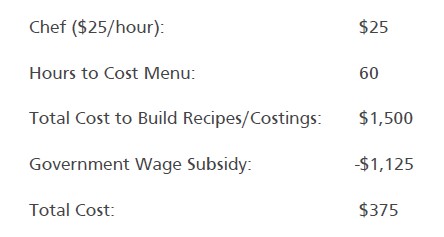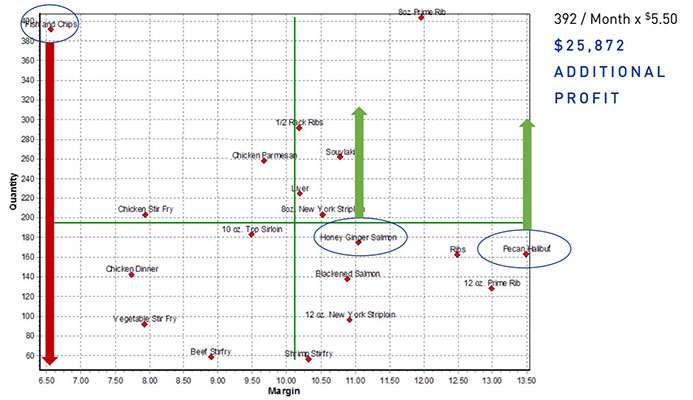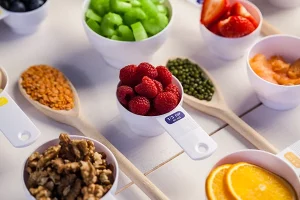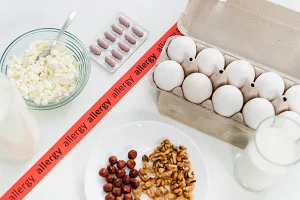As we look ahead at the market fluctuations kickstarted by COVID, we start to see opportunities for restaurant owners, chefs, and foodservice professionals alike. There is no better time to get ahead, plan and look forward to operational strategies of efficiency, cost-cutting, and connecting with the communities you create these menus and recipes for.
At the end of the day, it’s about the people we feed and nourish. It is every company’s duty to work smarter and more efficiently to be able to stay in business and yield a good profit. This article aims to help answer operational questions and guide you to better menu engineering and recipe costing practices.
Menu Engineering
Properly understanding the concept of menu engineering helps foodservice professionals add an extra 2% to 4% to their bottom line. By engineering your menu for profits, you build strategies to improve guest value, reduce food costs, and to budget smartly while operating optimally during recovery.
Read more: Are Sweet Potatoes Healthy?
Your Menu
Menu development is not the same as menu engineering. It encompasses flavor profiles, which are the dishes that you serve, and the menu ideology behind the concept.
Your menu is the main profit of your organization. Menu engineering focuses on the profitability of your menu, which includes the prices listed on it, your pricing strategy, and strategies on how to add the most profit to your bottom line.
Read more: How to Read A Nutrition Label
The 30% Ideology
The 30% ideology seems to be a popular way to price food costs in the restaurant industry despite its inaccurate pricing strategy. According to a Chron article, typically, food and beverage costs for the restaurant industry range from 28%-35%, depending on the restaurant style and the variety of sales. The Fifteen Group, a restaurant consulting agency, settles the aim at 30% or better for food costs. The idea behind this is to discover your sale price by costing the items, then tripling the cost and adding a bit more to that in the end.
Lacking the knowledge of proper pricing is a widely known issue in the industry.
Knowing the true cost of your items is vital in the world of business, and building a strategic pricing strategy around recipe costing should always be one of the goals to aim for, especially in trying financial times.
Read more: Healthier Menus make Healthier Communities
Recipe Costing
Recipe costing is a key ingredient to the success of your business.
By understanding the price of what you are selling, you can easily drive profitability with your menu alone. It is worth hiring extra help to properly cost your menu; your business will benefit from it in the long run.
Post-COVID
The government is now paying 75% of your wages in the form of the Government Wage Subsidy. To illustrate further, take a look at the numbers below:

Right now, it will only cost you $375 of your chef’s time to properly find out the cost of your menu and go through the whole process of recipe costing. This will change the outlook of your business by providing you with powerful insights that will elevate your strategies profoundly.
Read more: The Benefits of Labeling: Featuring Your Off-the-Shelf Food Products and Nutrition Facts
Margin Menu Pricing
The proper approach to menu engineering starts with Margin Menu Pricing. This allows you to improve your profitability by at least 2% by changing your approach to menu prices.
A higher product cost means better quality or a bigger portion of your item, which can dramatically improve your customer experience.
It can even indicate both values combined, making it a far superior product. Margins also play a crucial role in menu engineering; by adjusting your sale price accordingly and not focusing so much on the food cost percentage, you can enhance your value proposition which is critical to driving loyal customers. Increase word-of-mouth advertising and grow your revenue.
Read more: Things that MUST be on a Food Label
The QuaM Graph
Quantity Margin Graph is the main tool that the foodservice industry uses for menu engineering. From mains to appetizers, depending on your restaurant, every item is graphed in a category. The bottom axis is the margin, which is the sale price minus the product cost. The quantity sold is displayed on the left-hand side (or the y-axis). This tool allows you to graph choice categories for your customers and displays invaluable data of where they’re choosing between different items on one graph.

(Hopkins, 2020)
This QuaM Graph created by The Fifteen Group displays four different quadrants and green lines that intersect in the middle. These lines represent the average profit margin and the average quantity of your items. The four quadrants are essential to the menu engineering process.
The stars are the winners. These are above average in both popularity and profit margin. The question marks are called puzzlers. They are profitable and you do not want them off the menu, but the goal is to sell more of these items. Driving profitability can mean changing how the item is labeled through its description or renaming it on the menu. It’s possible that your customers might not even know what it is, but deem it delicious. Another option is driving sales by lowering the price. Maybe your customers love the item but just finds it a tad bit expensive for their taste.
Dogs are below average quantity and below-average margin. These items need to be taken off your menu so that your chefs can either recreate it or find a way to make it a profitable dish. If this item has to be on your menu, ensure that you’re charging for this item appropriately, by not losing profits. Opportunities on the other hand are incredibly popular items that are not generating the profit that you want on your menu. The more popular these items are, the less susceptible they are to price sensitivity.
Read more: Consumer Trends and Your Food Service Business in the Post-COVID Era
Inventory Counts
Food cost percentage should only come into play when doing inventory counts. After engineering your menu to maximize the profitability of your business, then the percent cost becomes a very useful tool. Count it as often as it is relevant for your business. To monitor food costs:
Opening Inventory + Purchases – Closing Inventory = Cost of Goods Sold
Theoretical Cost
To obtain theoretical cost (i.e. what your restaurant food costs should be), The Fifteen Group states that you must first cost your menu properly and obtain your POS data to display your mix of sales. This is a vital step to your menu engineering process. The need to cost out your recipes to maximize the profitability of your menu is essential to the success of your business. The Culinary Pro notes that a theoretical budget helps focus your operation’s goals so that your managers and chefs can make adjustments as needed to maintain financial stability. It gives you and your staff a tangible and attainable goal to aim for.
It’s also important to take care of never diminishing your restaurant’s value proposition in order to meet unrealistic objectives. In the end, the aim is to have loyal customers that will keep coming through your doors and spread the good word about your restaurant and tasty menu.
Read more: When it comes to reading food labels, what’s most important?

Conclusion
The post-COVID operational landscape presents both challenges and opportunities to restaurants and food services as the economy slowly reopens. As restaurant owners and foodservice professionals, the need for proper recipe costing and menu engineering practices is essential to keep your business going and yield a good profit. Simply put, a good nutrition analysis software is a good addition to your operation.
The service world has changed permanently since the pandemic and we will likely see a rapidly changing economy in the new future. Adopting a scalable business model and strategizing for operating in a recession, or even a depression, now will help your business succeed in the near future.



















